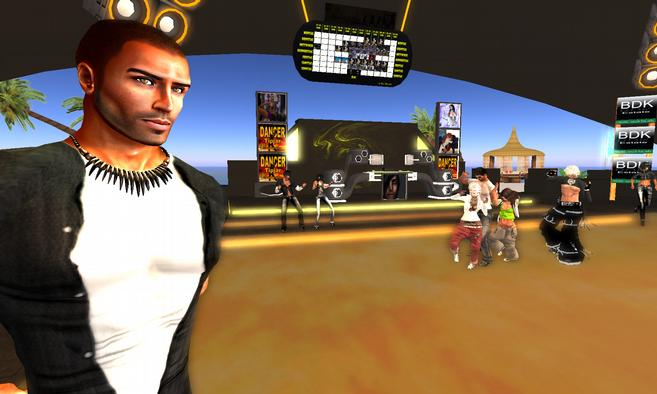

It is in this context and the imaginative aspects of this world that it dawned on me an environment perfect for alternate reality gaming. It takes minutes to build a complex 3D structure and texture map it, hours to construct a building with multiple floors and seconds to travel anywhere. So we have a real world in which to potentially do things with far more imagination but more importantly, at lower cost and more efficiently. Another rabbit hole of game within a game – but SL is not realy a game but a created society, which makes it ideal for what I describe below in the guide element of this post. We need to go beyond just concerts or dances or bingo – but whole in-world game-play, that has some sophistication and plays on the paradigms inherent in the space. Inside Second Life people get paid for organising events and ARG puppet-masters will and should be part of that mix.

#2nd life game upgrade#
(As a tangent I personally believe we need to move towards creating new and non-representations of our real world as most folk in SL tend to midly enhance their RL existences, build precise replicas of the first life or a few enlightened ones are planning singularity! – I will not go into that rabbit hole as I posted about the Human 2.0 upgrade a few months ago).īack to the post which in theory sounds complex. Second Life is the leader in this area and so has become the focus of many activities that require represention – a sort of ‘real as it gets’ for doing real world-type things in – a place to create something representing the real world, our physical world.

As you may have read on my previous post “The Personalization of Second Life” there are a few shared, virtual spaces that are infinitely personalizable and customisable. Besides skepticism of NFTs and pie-in-the-sky ideas about interoperable platforms, he suggests that making Second Life usable via phone or using your webcam to animate your avatar’s facial animation would help it grow more than anything that requires users to wear a virtual reality headset.Ok the title sounds a little ‘space cadet’ and paradoxical but bear with me on this one because the implications go way beyond the focus of this post which is a quick orientation and guide to non-scripted but organised ‘social play’ inside a virtual world and a great way to plan a Real World Alternate Reality Game – or run a special form one inside the vr world. Second Life launched in 2003, and Rosedale admitted to its technological limitations, like its inability to have more than 100 or so people in one space, but tells CNET that its current state could serve as an advantage over what VR-first “metaverse” projects are trying to build. However, they also noted that Second Life already allows withdrawing money from in-game sales to their real-world accounts and thinks it can win over younger users with better avatars and a lack of the kind of ad tracking platform we associate with Meta / Facebook. Linden Research launched Sansar, a VR successor to Second Life, a few years ago but sold the project in 2020 to focus on its main title.Īn executive with Linden said to the Wall Street Journal that upgrades for Second Life would focus on tweaking the social and economic aspects of the game to try and drive user growth. TiVo receives $215 million patent settlement from AT&T TiVo to merge with Xperi to create ‘one of the largest licensing companies in the world’ As we’ve seen with companies like TiVo and Nokia, an early presence in a space could include ownership over technology that becomes much more valuable later on. The deal also includes patents, like two covering community moderation in decentralized environments. However, his VR project High Fidelity, a telepresence-focused experiment that took a step back from developing its tech for head-mounted displays, will invest in Second Life owner Linden Research with cash and “distributed computing patents.” Speaking to CNET, Rosedale said High Fidelity is shifting seven people to work on Second Life.

After launching Second Life, he’s been involved in a number of other efforts, popping up with a virtual marketplace for people to sell their skills and a neuroscience collaboration,
#2nd life game full#
Read the full announcement - High Fidelity January 13, 2022Ī strengthened “commitment to growing an innovative, inclusive, and diverse metaverse” includes Second Life founder Philip Rosedale rejoining the project as a strategic adviser. BIG NEWS! Invests in Returns as an Advisor, Along with Key #Metaverse Assets to Help Fuel Growth.


 0 kommentar(er)
0 kommentar(er)
